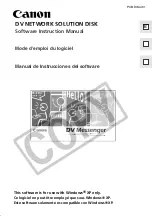
The My Organization group
The My Organization group, the root of your System Tree, contains all systems added to or detected
on your network (manually or automatically). Until you create your own structure, all systems are
added to the Lost&Found group.
The My Organization group has these characteristics:
• It can't be deleted.
• It can't be renamed.
The Lost&Found group
The Lost&Found group is a subgroup of the My Organization group. Depending on the methods you
specify creating and maintaining the System Tree, the server uses different characteristics to
determine where to place systems. The Lost&Found group stores systems whose locations could not
be determined.
The Lost&Found group has these characteristics:
• It can't be deleted.
• It can't be renamed.
• Its sorting criteria can't be changed from being a catch-all group (although you can provide sorting
criteria for the subgroups you create within it.)
• It always appears last in the list and is not alphabetized among its peers.
• Users must be granted permissions to the Lost&Found group to see the contents of Lost&Found.
• When a system is sorted into Lost&Found, it is placed in a subgroup named for the system’s
domain. If no such group exists, one is created.
If you delete systems from the System Tree, be sure you select the
option to remove their agents. If the agent is not removed, deleted
systems reappear in the Lost&Found group because the agent continues
to communicate to the server.
System Tree groups
System Tree groups represent a collection of systems. Deciding which systems to group together
depends on the unique needs of your network and business. You can group systems based on
machine-type (e.g. laptops, servers, desktops), geography (e.g. North America, Europe), political
boundaries (e.g. Finance, Development), or any other criteria that supports your needs.
Groups have these characteristics:
• They are created by global administrators or users with the appropriate permissions.
• They can include both systems and other groups (subgroups).
• They are administered by a global administrator or a user with appropriate permissions.
Grouping systems with similar properties or requirements into these units allows you to manage
policies for systems in one place, rather than setting policies for each system individually.
As part of the planning process, consider the best way to organize systems into groups prior to
building the System Tree.
12
Organizing the System Tree
The System Tree structure
122
McAfee
®
ePolicy Orchestrator
®
4.6.0 Software Product Guide
Summary of Contents for EPOCDE-AA-BA - ePolicy Orchestrator - PC
Page 1: ...Product Guide McAfee ePolicy Orchestrator 4 6 0 Software...
Page 14: ......
Page 20: ......
Page 24: ......
Page 26: ......
Page 42: ......
Page 46: ......
Page 76: ......
Page 100: ......
Page 108: ......
Page 120: ......
Page 158: ......
Page 162: ......
Page 210: ......
Page 228: ......
Page 238: ......
Page 264: ......
Page 288: ......
Page 310: ......
Page 314: ......
Page 328: ...00...
















































